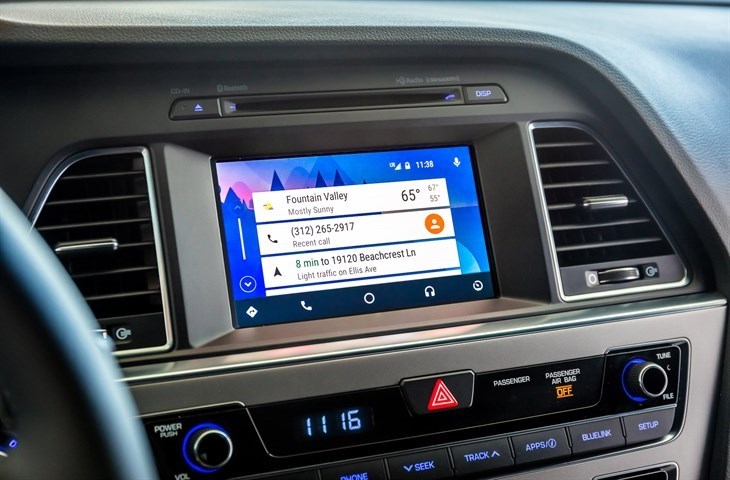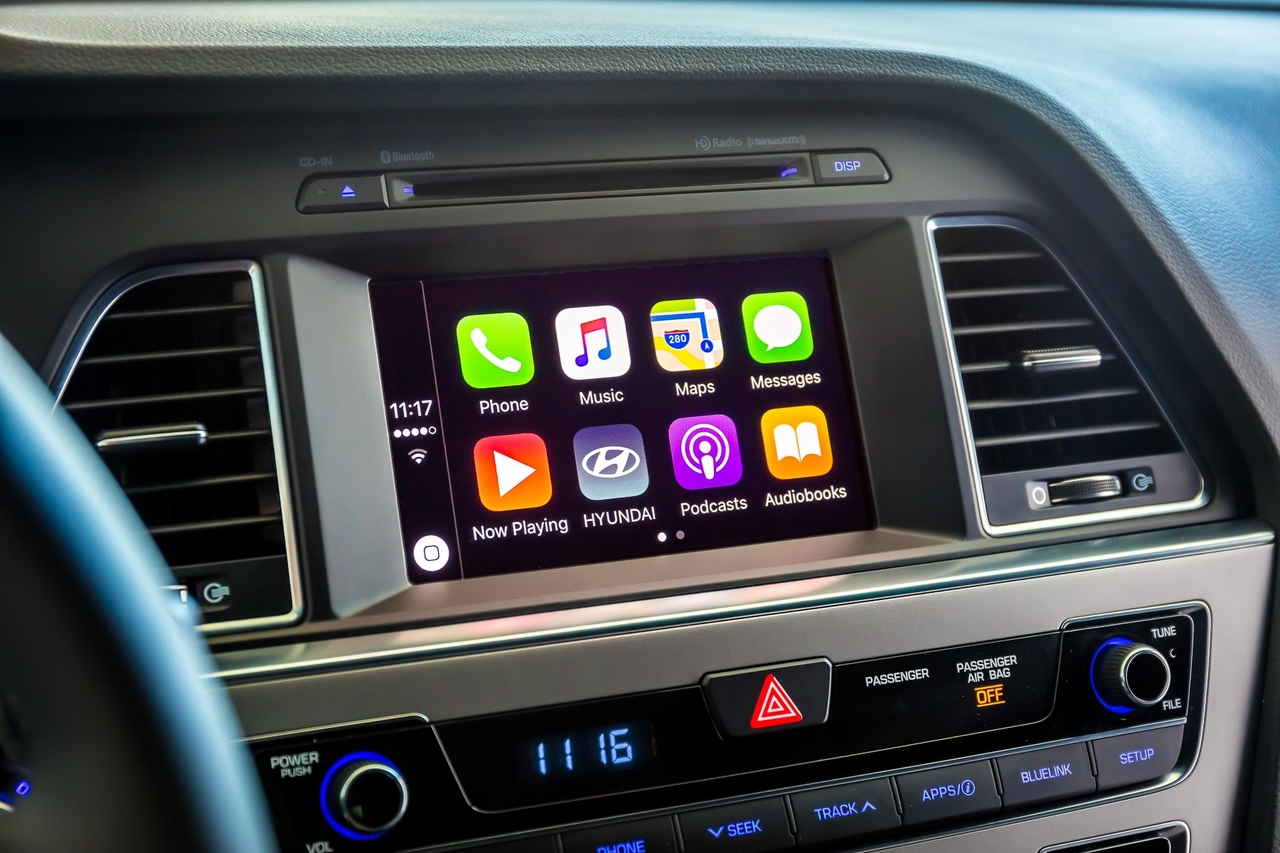
The Korean brand has released a software update that allows certain existing vehicles to add smartphone integration into their infotainment systems. The do-it-yourself upgrade is available at no cost on MyHyundai.com, but dealerships nationwide will install it for a fee starting in June.
“Launching smartphone integrations on these existing models through MyHyundai will enhance the overall ownership experience,” said Barry Ratzlaff, executive director of digital business planning at Hyundai. “Existing owners can now get the most out of their smartphones, by simply loading new software into their cars’ infotainment systems. Just a few years ago, they would have had to buy a new car to get such a powerful upgrade.”
Select model years of the Hyundai Sonata, Genesis, Elantra GT, Tucson, Santa Fe, and Santa Fe Sport are all compatible will the update, and for a full list of vehicles, check out the automaker’s press release. Coming soon, the brand will launch do-it-yourself instruction videos on the MyHyundai site as well as the Hyundai USA YouTube page.
Read more: MyHyundai could be the first carmaker-specific Android Auto app
Smartphone integration is one of the biggest stories in the auto industry right now, but an even bigger one is the increased proliferation of electric vehicles. On Tuesday, we reported that Hyundai plans to launch a number of emissions-free vehicles in the next four years, including the Ioniq Electric this fall and a 250-mile pure EV by 2020. For more on Hyundai’s battery-powered future, click here.
Editors' Recommendations
- Look who just replaced Samsung as king of the global smartphone market
- The best smartphone case brands in 2023: the 20 best ones
- What does a 120Hz refresh rate do? Smartphone refresh rates explained
- How to tell if your smartphone has been hacked
- Samsung and Apple dominated the smartphone market in 2021



